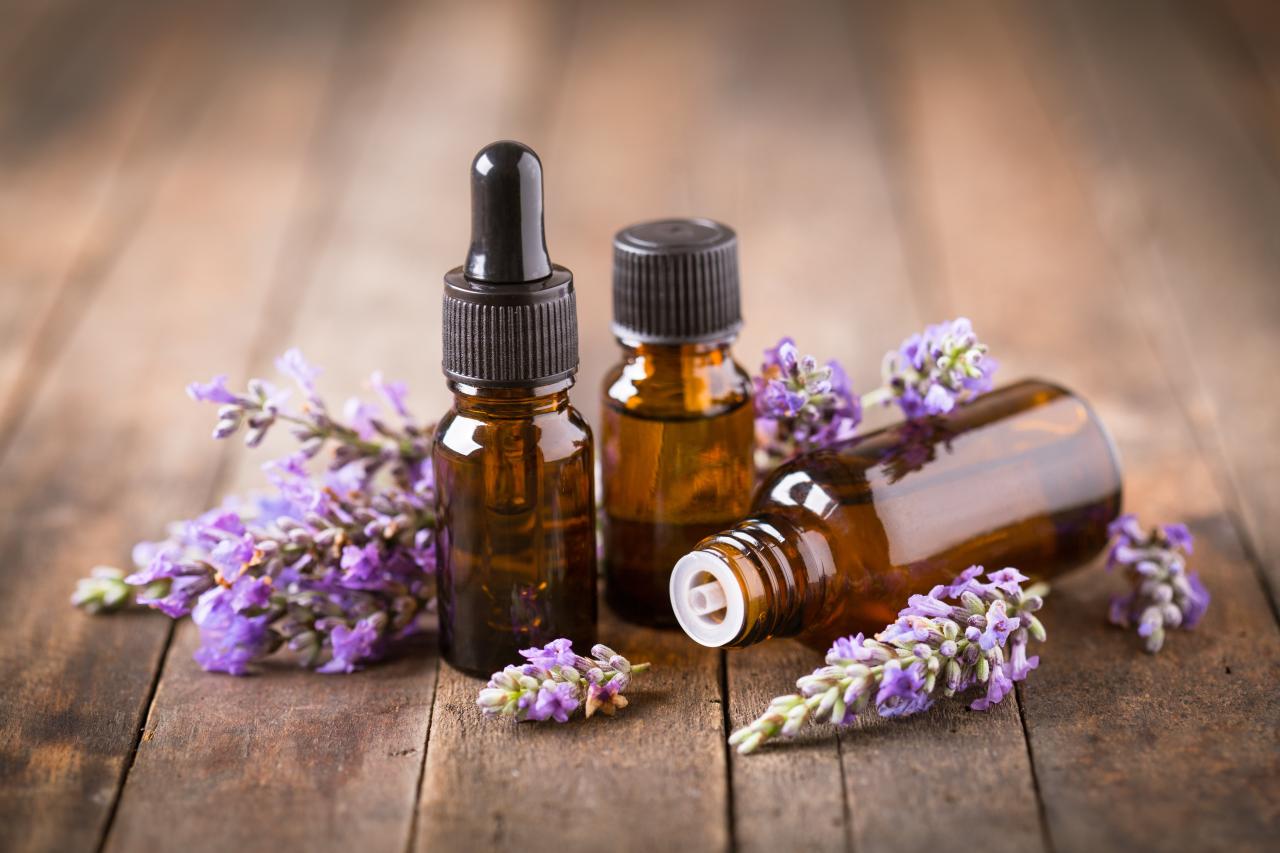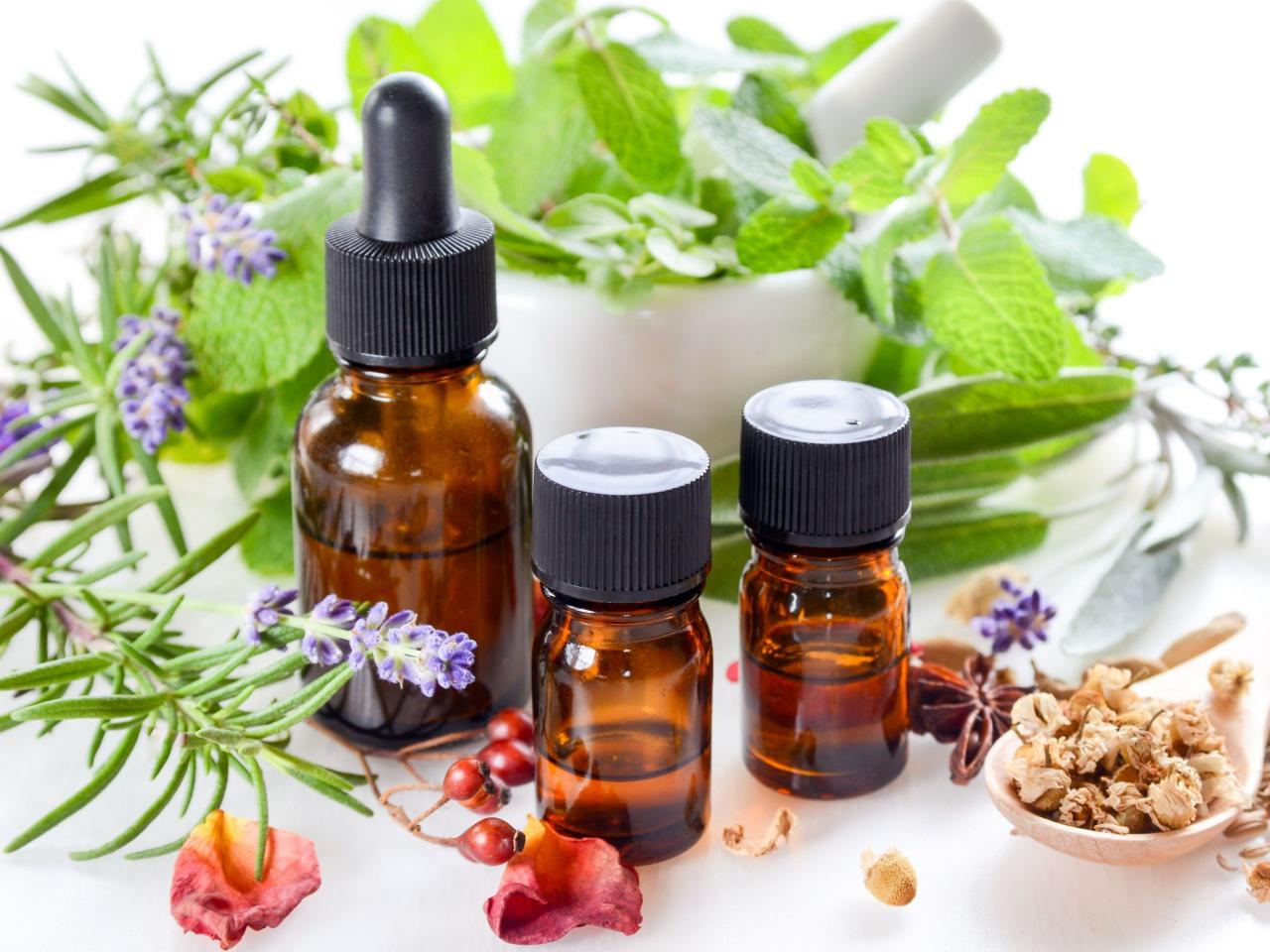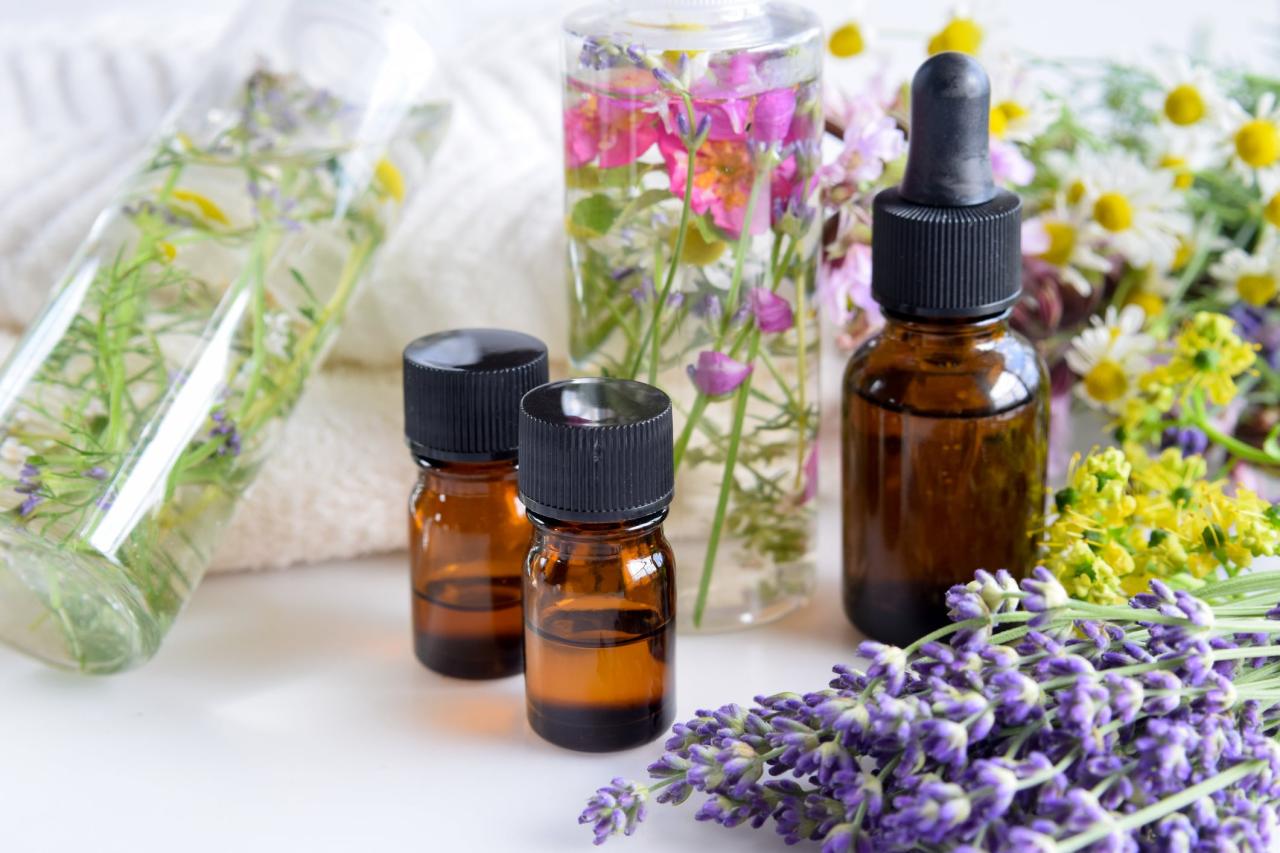In the realm of holistic therapies, aromatherapy stands as a beacon of natural healing, inviting us to immerse ourselves in the aromatic embrace of essential oils. From their molecular makeup to their myriad therapeutic applications, the world of aromatherapy oils holds a wealth of wonders waiting to be explored.
As we delve into the depths of this fragrant realm, we will uncover the secrets of aromatherapy oil extraction, unveil the art of blending oils for synergistic effects, and navigate the safety considerations that accompany their use. Join us on this aromatic journey as we unlock the transformative power of aromatherapy oils.
Aromatherapy Oil Properties

Aromatherapy oils are concentrated plant oils that contain volatile compounds. These compounds are responsible for the characteristic scent of each oil and are also believed to have therapeutic properties.
Aromatherapy oils are typically extracted from plants through steam distillation, cold pressing, or solvent extraction. The extraction method used will affect the chemical composition and physical properties of the oil.
Chemical Composition
Aromatherapy oils are composed of a variety of chemical compounds, including terpenes, esters, alcohols, and ketones. The specific compounds present in an oil will vary depending on the plant from which it was extracted.
Terpenes are the most common compounds found in aromatherapy oils. They are responsible for the characteristic scent of many oils and are also believed to have a variety of therapeutic properties, including antibacterial, antiviral, and anti-inflammatory effects.
Esters are another common compound found in aromatherapy oils. They are responsible for the sweet, fruity scent of many oils and are also believed to have a variety of therapeutic properties, including sedative, relaxing, and antispasmodic effects.
Alcohols are also found in aromatherapy oils. They are responsible for the fresh, minty scent of many oils and are also believed to have a variety of therapeutic properties, including antiseptic, antibacterial, and antiviral effects.
Ketones are found in a smaller number of aromatherapy oils. They are responsible for the spicy, woody scent of many oils and are also believed to have a variety of therapeutic properties, including stimulating, invigorating, and expectorant effects.
Physical Properties
Aromatherapy oils are typically clear or slightly colored liquids. They are volatile, meaning that they evaporate easily at room temperature. The volatility of an oil will affect its therapeutic properties, as more volatile oils will be more easily absorbed by the skin and respiratory system.
Aromatherapy oils are also typically insoluble in water. This means that they will not mix with water and will float on the surface. The insolubility of aromatherapy oils makes them ideal for use in diffusers, as they will not clog the diffuser’s mechanism.
Aromatherapy Oil Applications

Aromatherapy oils offer a wide range of therapeutic benefits, promoting relaxation, reducing stress, and enhancing mood. These versatile oils can be applied in various ways to harness their therapeutic properties.
Inhalation
Inhaling aromatherapy oils is a direct and effective way to experience their effects. Essential oil diffusers release a fine mist of oil particles into the air, allowing them to be absorbed through the lungs and into the bloodstream. This method is particularly beneficial for respiratory issues, such as congestion and asthma.
Topical Application
Applying aromatherapy oils directly to the skin allows for localized effects. Diluted with a carrier oil, such as coconut or jojoba oil, essential oils can be applied to specific areas of the body to relieve muscle tension, soothe inflammation, or improve skin health.
Diffusion
Diffusion is a gentle and passive way to disperse aromatherapy oils into the environment. Diffusers release a steady stream of essential oil molecules into the air, creating a calming and fragrant atmosphere. This method is ideal for promoting relaxation, reducing stress, and enhancing mood in a room.
Aromatherapy Oil Blends
Aromatherapy oil blends combine various essential oils to create synergistic effects that enhance their therapeutic properties. These blends can be used for a wide range of purposes, including relaxation, stress relief, and physical well-being.
The following table lists popular aromatherapy oil blends and their intended uses:
| Blend Name | Intended Use | Oils Used (Proportions) |
|---|---|---|
| Calm Blend | Relaxation, stress relief | Lavender (5 drops), chamomile (3 drops), bergamot (2 drops) |
| Energy Blend | Mood boost, alertness | Orange (4 drops), lemon (3 drops), peppermint (2 drops) |
| Immune Boost Blend | Immune system support | Eucalyptus (3 drops), tea tree (2 drops), rosemary (2 drops) |
| Pain Relief Blend | Muscle pain, headaches | Peppermint (4 drops), eucalyptus (3 drops), rosemary (2 drops) |
| Sleep Blend | Sleep promotion | Lavender (6 drops), chamomile (4 drops), vetiver (2 drops) |
The synergistic effects of combining different aromatherapy oils can be attributed to their complementary therapeutic properties. For example, the Calm Blend combines the relaxing effects of lavender with the calming properties of chamomile and the uplifting aroma of bergamot, creating a blend that promotes deep relaxation and stress relief.
Aromatherapy Oil Safety
Aromatherapy oils are natural substances, but they can still pose risks if used improperly. Understanding the potential side effects and following safe usage guidelines is crucial to enjoy the benefits of aromatherapy while minimizing any potential hazards.
Common side effects associated with aromatherapy oils include skin irritation, allergic reactions, and respiratory problems. Some oils, such as eucalyptus and peppermint, can be toxic if ingested or used in high concentrations. Pregnant women, children, and individuals with certain health conditions may be more susceptible to the effects of aromatherapy oils.
Dosage Recommendations
The recommended dosage for aromatherapy oils varies depending on the oil and the method of use. In general, it is best to start with a low concentration and gradually increase it as needed. For topical use, dilute the oil in a carrier oil, such as jojoba or coconut oil, at a ratio of 2-3 drops of essential oil per 10ml of carrier oil.
For inhalation, add a few drops of oil to a diffuser or humidifier.
Precautions for Specific Populations
Pregnant women should avoid using certain aromatherapy oils, such as clary sage, rosemary, and thyme. These oils can stimulate uterine contractions and increase the risk of miscarriage. Children and individuals with asthma or other respiratory conditions should also use aromatherapy oils with caution, as some oils can trigger respiratory problems.
Consulting a Healthcare Professional
Before using aromatherapy oils for therapeutic purposes, it is always advisable to consult with a healthcare professional. They can provide personalized guidance on the safe and effective use of aromatherapy oils based on your individual health needs and any potential interactions with medications or medical conditions.
Aromatherapy Oil Industry
The global aromatherapy oil market is a rapidly growing industry, driven by increasing consumer demand for natural and holistic health and wellness solutions. The market is dominated by a few major players, including Young Living Essential Oils, doTERRA, and NOW Foods.
Trends in the aromatherapy oil industry include the growing popularity of essential oil diffusers, the increasing use of aromatherapy oils in spas and salons, and the development of new and innovative aromatherapy oil products.
Ethical and Environmental Considerations
There are a number of ethical and environmental considerations related to the production and use of aromatherapy oils. These include the sustainability of the raw materials used, the working conditions of the people involved in the production process, and the environmental impact of the production and use of aromatherapy oils.
Final Review

Our exploration of aromatherapy oils culminates in a deep appreciation for their therapeutic potential. These fragrant elixirs offer a gentle yet profound approach to promoting relaxation, alleviating stress, and enhancing our overall well-being. As we incorporate aromatherapy oils into our daily routines, we embrace a holistic approach to self-care, fostering a harmonious balance between body, mind, and spirit.